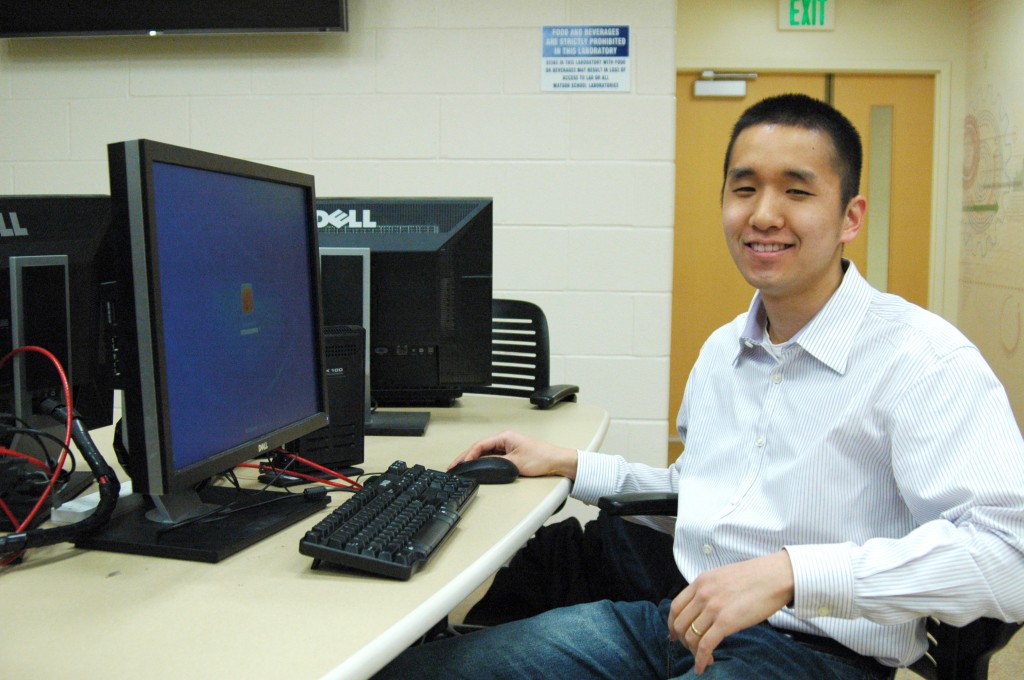
Conducting research in what he calls a relatively new field, Jin Woo Lee will be displaying his ongoing exploration of micro and nanotechnology at this year’s Research Days.
The research that Lee has been doing in the last year involves the use of gold nanorods (GNRs) — 70 nanometers in size on the scale of nanotechnology — to sterilize catheters, which are thin tubes that are surgically inserted into the body used in various medical practices.
According to Lee, a senior majoring in mechanical engineering, often times a catheter, once inserted in the body, will become infected over time and need to be surgically removed. It is Lee’s belief that with the implementation of such technology, those patients with infected catheters will undergo fewer surgeries and see shorter recovery time.
“Instead of removing it we’re trying to see if it’s doable to disinfect it when it’s still inside the body,” Lee said. “It will be safer. The gold is not toxic to the patient … we’re using laser and we’re only trying to target the bacteria. Research has shown that this is doable.”
According to Lee, when one shines a laser at gold nanoparticles, they absorb the energy and turn it into heat. Lee and his adviser, Peter Huang, a mechanical engineering professor at Binghamton University, are trying to see if they can sterilize medical equipment with that heat.
According to Huang, the two are focusing on having a greater understanding of the light absorption and heating of GNRs when they are illuminated by visible and infrared light.
“In particular, we are interested in evaluating their effectiveness when they are applied to organic solar panels (light absorption) and medical catheters disinfection (heating),” Huang wrote in an email.
The pair are currently working on computational models, or simulations, in order to see how the technology works without doing experimental work.
“We conduct a computational study that focuses on the angle and polarization of light illumination, and the density and alignment of GNRs in a monolayer coating,” Huang wrote.
Huang said he believes this is the first time anyone has examined these aspects.
While Lee admits that working in nanotechnology research has been challenging because of the newness of the field, he hopes that presenting his research will bring attention to the field.
“I want to bring awareness that there is so much more research to do by utilizing this micro and nanotechnology, especially in the areas of biology and health care,” Lee said.
With graduation approaching, Lee has to consult with his advisers in what will come of his research. Until then, Lee and Huang are looking to send their computational results in for publication or for a conference.
“I am planning to seek federal grant support in developing the GNR coating into an actual functional product,” Huang wrote.


